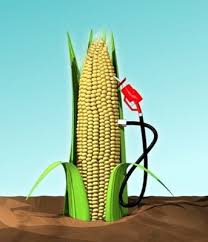 |  |  |
1. Nonproprietary Names
· BP: Ethanol (96%)a
· JP: Ethanol
· PhEur: Ethanolum (96 per centum)
· USP: Alcohol
2. Synonyms
Ethyl alcohol; ethyl hydroxide; grain alcohol; methyl carbinol.
3. Chemical Name and CAS Registry Number
Ethanol [64-17-5]
4. Empirical Formula and Molecular Weight
C2H6O 46.07
5. Structural Formula
6. Functional Category
Antimicrobial preservative; disinfectant; skin penetrant; solvent.
7. Applications in Pharmaceutical Formulation or Technology
Ethanol and aqueous ethanol solutions of various concentrations (see Sections 8 and 17) are widely used in pharmaceutical formulations and cosmetics; . Although ethanol is primarily used as a solvent, it is also employed in solutions as an antimicrobial preservative.1,2 Topical ethanol solutions are also used as penetration enhancers3-6 and as disinfectants. Ethanol has also been used in transdermal preparations in combination with Labrasol as a co-surfactant.7
| Use | Concentration (% v/v) |
|---|---|
| Antimicrobial preservative | ≥10 |
| Disinfectant | 60–90 |
| Extracting solvent in galenical manufacture | Up to 85 |
| Solvent in film coating | Variable |
| Solvent in injectable solutions | Variable |
| Solvent in oral liquids | Variable |
| Solvent in topical products | 60–90 |
8. Description
In the BP 2004, the term ‘ethanol’ used without other qualification refers to ethanol containing ≥99.5% v/v of C2H6O. The term ‘alcohol’, without other qualification, refers to ethanol 95.1–96.9% v/v. Where other strengths are intended, the term ‘alcohol’ or ‘ethanol’ is used, followed by the statement of the strength.
In the PhEur 2005, anhydrous ethanol contains not less than 99.5% v/v of C2H6O at 20°C. The term ethanol (96%) is used to describe the material containing water and 95.1–96.9% v/v of C2H6O at 20°C.
In the USP 28, the term ‘dehydrated alcohol’ refers to ethanol ≥99.5% v/v. The term ‘alcohol’ without other qualification refers to ethanol 94.9–96.0% v/v.
In the JP 2001, ethanol (alcohol) contains 95.1–95.6% v/v (by specific gravity) of C2H6O at 15°C.
In the Handbook of Pharmaceutical Excipients, the term ‘alcohol’ is used for either ethanol 95% v/v or ethanol 96% v/v.
Alcohol is a clear, colorless, mobile, and volatile liquid with a slight, characteristic odor and burning taste.
See also Section 17.
9. Pharmacopeial Specifications
| Test | JP 2001 | PhEur 2005 | USP 28 |
|---|---|---|---|
| Identification | + | + | + |
| Characters | + | + | — |
| Specific gravity | 0.814–0.816 | 0.805–0.812 | 0.812–0.816 |
| Acidity or alkalinity | + | + | + |
| Clarity of solution | + | + | — |
| Nonvolatile residue | ≤1 mg/40 mL | ≤25 ppm | ≤1 mg/40 mL |
| Water-insoluble substances | — | — | + |
| Volatile impurities | + | + | — |
| Aldehydes | + | ≤10 ppm v/v | + |
| Amyl alcohol, etc. | — | — | + |
| Absorbance | — | + | — |
| at 240 nm | — | ≤ 0.40 | — |
| at 250–260 nm | — | ≤ 0.30 | — |
| at 270–340 nm | — | ≤ 0.10 | — |
| Fusel oil constituents | + | — | — |
| Acetone and propan-2-ol | — | — | + |
| Methanol | — | ≤ 200 ppm | + |
| Benzene | — | ≤ 2 ppm | — |
| Acetaldehyde and acetal | — | ≤ 10 ppm | — |
| Reducing substances | + | — | — |
| Organic volatile impurities | — | — | + |
| Chloride | + | — | — |
| Heavy metals | ≤1.2 ppm | — | — |
| Assay | 95.1–95.6% | 95.1–96.9% | 92.3–93.8% by weight |
|
|
|
| 94.9–96.0% by volume |
10. Typical Properties
Antimicrobial activity:
ethanol is bactericidal in aqueous mixtures at concentrations between 60% and 95% v/v; the optimum concentration is generally considered to be 70% v/v. Antimicrobial activity is enhanced in the presence of edetic acid or edetate salts.1 Ethanol is inactivated in the presence of nonionic surfactants and is ineffective against bacterial spores.
Boiling point:
78.15°C
Flammability:
readily flammable, burning with a blue, smokeless flame.
Flash point:
14°C (closed cup)
Solubility:
miscible with chloroform, ether, glycerin, and water (with rise of temperature and contraction of volume).
Specific gravity:
0.8119–0.8139 at 20°C
Note:
the above typical properties are for alcohol (ethanol 95% or 96% v/v). See Section 17 for typical properties of dehydrated alcohol.
11. Stability and Storage Conditions
Aqueous ethanol solutions may be sterilized by autoclaving or by filtration and should be stored in airtight containers, in a cool place.
12. Incompatibilities
In acidic conditions, ethanol solutions may react vigorously with oxidizing materials. Mixtures with alkali may darken in color owing to a reaction with residual amounts of aldehyde. Organic salts or acacia may be precipitated from aqueous solutions or dispersions. Ethanol solutions are also incompatible with aluminum containers and may interact with some drugs.
13. Method of Manufacture
Ethanol is manufactured by the controlled enzymatic fermentation of starch, sugar, or other carbohydrates. A fermented liquid is produced containing about 15% ethanol; ethanol 95% v/v is then obtained by fractional distillation. Ethanol may also be prepared by a number of synthetic methods.
14. Safety
Ethanol and aqueous ethanol solutions are widely used in a variety of pharmaceutical formulations and cosmetics. It is also consumed in alcoholic beverages.
Ethanol is rapidly absorbed from the gastrointestinal tract and the vapor may be absorbed through the lungs; it is metabolized, mainly in the liver, to acetaldehyde, which is further oxidized to acetate.
Ethanol is a central nervous system depressant and ingestion of low to moderate quantities can lead to symptoms of intoxication including muscle incoordination, visual impairment, slurred speech, etc. Ingestion of higher concentrations may cause depression of medullary action, lethargy, amnesia, hypothermia, hypoglycemia, stupor, coma, respiratory depression, and cardiovascular collapse. The lethal human blood-alcohol concentration is generally estimated to be 400–500 mg/100 mL.
Although symptoms of ethanol intoxication are usually encountered following deliberate consumption of ethanol-containing beverages, many pharmaceutical products contain ethanol as a solvent, which, if ingested in sufficiently large quantities, may cause adverse symptoms of intoxication. In the USA, the maximum quantity of alcohol included in OTC medicines is 10% v/v for products labeled for use by people of 12 years of age and older, 5% v/v for products intended for use by children aged 6–12 years of age, and 0.5% v/v for products for use by children under 6 years of age.8
Parenteral products containing up to 50% of alcohol (ethanol 95 or 96% v/v) have been formulated. However, such concentrations can produce pain on intramuscular injection and lower concentrations such as 5–10% v/v are preferred. Subcutaneous injection of alcohol (ethanol 95% v/v) similarly causes considerable pain followed by anesthesia. If injections are made close to nerves, neuritis and nerve degeneration may occur. This effect is used therapeutically to cause anesthesia in cases of severe pain, although the practice of using alcohol in nerve blocks is controversial. Doses of 1 mL of absolute alcohol have been used for this purpose.9
Preparations containing more than 50% v/v alcohol may cause skin irritation when applied topically.
LD50 (mouse, IP): 0.93 g/kg10
LD50 (mouse, IV): 1.97 g/kg
LD50 (mouse, oral): 3.45 g/kg
LD50 (mouse, SC): 8.29 g/kg
LD50 (rat, IP): 3.75 g/kg
LD50 (rat, IV): 1.44 g/kg
LD50 (rat, oral): 7.06 g/kg
15. Handling Precautions
Observe normal precautions appropriate to the circumstances and quantity of material handled. Ethanol and aqueous ethanol solutions should be handled in a well-ventilated environment. In the UK, the long-term 8-hour TWA exposure limit for ethanol is 1920 mg/m3 (1000 ppm).11 Ethanol may be irritant to the eyes and mucous membranes and eye protection and gloves are recommended. Ethanol is flammable and should be heated with care. Fixed storage tanks should be electrically grounded to avoid ignition from electrostatic discharges when ethanol is transferred.
16. Regulatory Status
Included in the FDA Inactive Ingredients Guide (dental preparations; inhalations; IM, IV, and SC injections; nasal and ophthalmic preparations; oral capsules, solutions, suspensions, syrups, and tablets; rectal, topical, and transdermal preparations). Included in the Canadian List of Acceptable Non-medicinal Ingredients. Included in nonparenteral and parenteral medicines licensed in the UK.
17. Related Substances
Dehydrated alcohol; denatured alcohol; dilute alcohol; isopropyl alcohol.
Dehydrated alcohol
Synonyms:
absolute alcohol; anhydrous ethanol; ethanol.
Autoignition temperature:
365°C
Boiling point:
78.5°C
Explosive limits:
3.5–19.0% v/v in air
Flash point:
12°C (closed cup)
Melting point:
−112°C
Moisture content:
absorbs water rapidly from the air.
Refractive index:
n20D = 1.361
Specific gravity:
0.7904–0.7935 at 20°C
Surface tension:
22.75 mN/m at 20°C (ethanol/vapor)
Vapor density (relative):
1.59 (air = 1)
Vapor pressure:
5.8 Pa at 20°C
Viscosity (dynamic):
1.22 mPa s (1.22 cP) at 20°C
Comments:
dehydrated alcohol is ethanol ≥99.5% v/v. See Section 8.
Denatured alcohol
Synonyms:
industrial methylated spirit; surgical spirit.
Comments:
denatured alcohol is alcohol intended for external use only. It has been rendered unfit for human consumption by the addition of a denaturing agent such as methanol or methyl isobutyl ketone.
Dilute alcohol
Synonyms:
dilute ethanol.
Specific gravity:
| Strength of alcohol (% v/v) | Specific gravity at 20°C |
|---|---|
| 90 | 0.8289–0.8319 |
| 80 | 0.8599–0.8621 |
| 70 | 0.8860–0.8883 |
| 60 | 0.9103–0.9114 |
| 50 | 0.9314–0.9326 |
| 45 | 0.9407–0.9417 |
| 25 | 0.9694–0.9703 |
| 20 | 0.9748–0.9759 |
Comments:
the term ‘ dilute alcohol’ refers to a mixture of ethanol and water of stated concentration. The BP 2004 lists eight strengths of dilute alcohol ( dilute ethanol) containing 90%, 80%, 70%, 60%, 50%, 45%, 25%, and 20% v/v respectively of ethanol.
18. Comments
Possession and use of nondenatured alcohols are usually subject to close control by excise authorities.
A specification for alcohol is contained in the Food Chemicals Codex (FCC).
The EINECS number for alcohol is 200-578-6.
19. Specific References
1. Chiori CO, Ghobashy AA. A potentiating effect of EDTA on the bactericidal activity of lower concentrations of ethanol. Int J Pharm 1983; 17: 121–128.
2. Karabit MS, Juneskans OT, Lundgren P. Studies on the evaluation of preservative efficacy. IV. The determination of antimicrobial characteristics of some pharmaceutical compounds in aqueous solutions. Int J Pharm 1989; 54: 51–56.
3. Liu P, Higuchi WI, Song W, et al. Quantitative evaluation of ethanol effects on diffusion and metabolism of β-estradiol in hairless mouse skin. Pharm Res 1991; 8(7): 865–872.(PubMed)
4. Verma DD, Fahr A. Synergistic penetration enhancement of ethanol and phospholipids on the topical delivery of cyclosporin A. J Controlled Release 2004; 97(1): 55–66.
5. Gwak SS, Oh IS, Chun IK. Transdermal delivery of ondansetron hydrochloride: effects of vehicles and penetration enhancers. Drug Dev Ind Pharm 2004; 30(2): 187–194.(PubMed)
6. Williams AC, Barry BW. Penetration enhancers. Adv Drug Delivery Rev 2004; 56(5): 603–618.
7. Kwean JH, Chi SC, Park ES. Transdermal delivery of diclofenac using microemulsions. Arch Pharmacol Res 2004; 27(3): 351–356.
8. Jass HE. Regulatory review. Cosmet Toilet 1995; 110(5): 21–22.
9. Lloyd JW. Use of anaesthesia: the anaesthetist and the pain clinic. Br Med J 1980; 281: 432–434.(PubMed)
10. Lewis RJ, ed. Sax’s Dangerous Properties of Industrial Materials, 11th edn. New York: Wiley, 2004: 1627–1628.
11. Health and Safety Executive. EH40/2002: Occupational Exposure Limits 2002. Sudbury: Health and Safety Executive, 2002.
20. General References
1. Lund W, ed. The Pharmaceutical Codex: Principles and Practice of Pharmaceutics, 12th edn. London: Pharmaceutical Press, 1994: 694–695.
2. Spiegel AJ, Noseworthy MN. Use of nonaqueous solvents in parenteral products. J Pharm Sci 1963; 52: 917–927.(PubMed)
3. Wade A, ed. Pharmaceutical Handbook, 19th edn. London: Pharmaceutical Press, 1980: 227–230.
